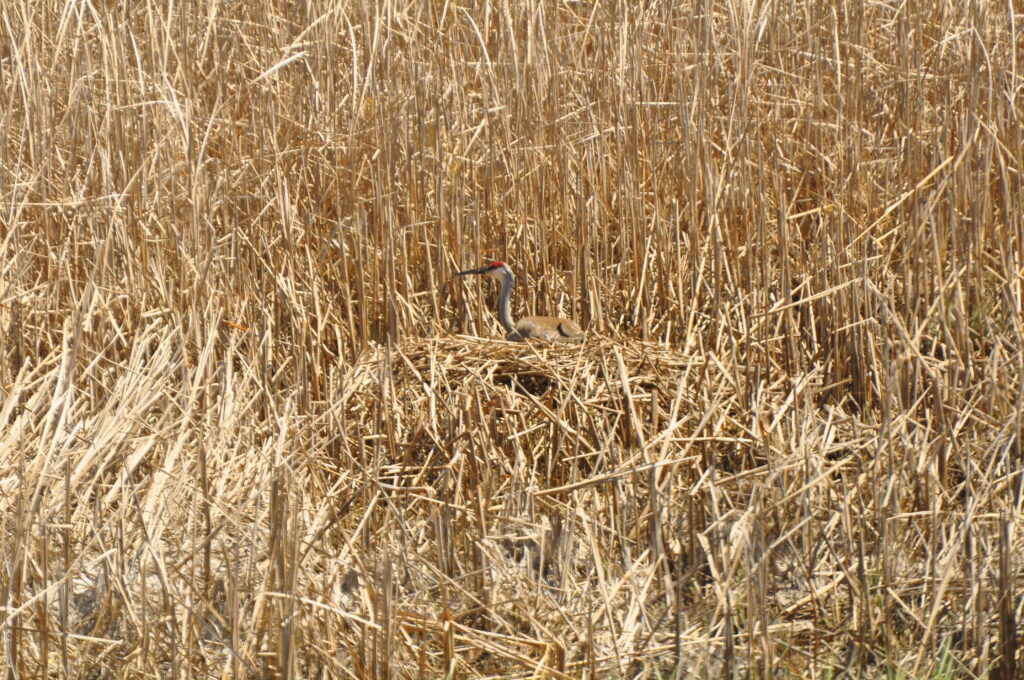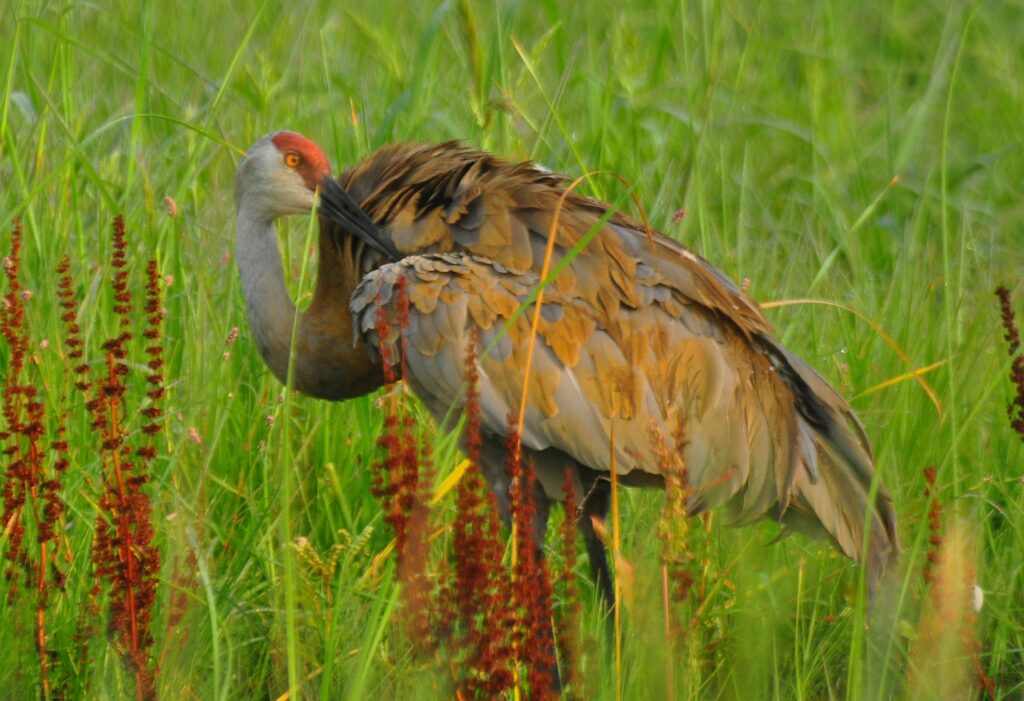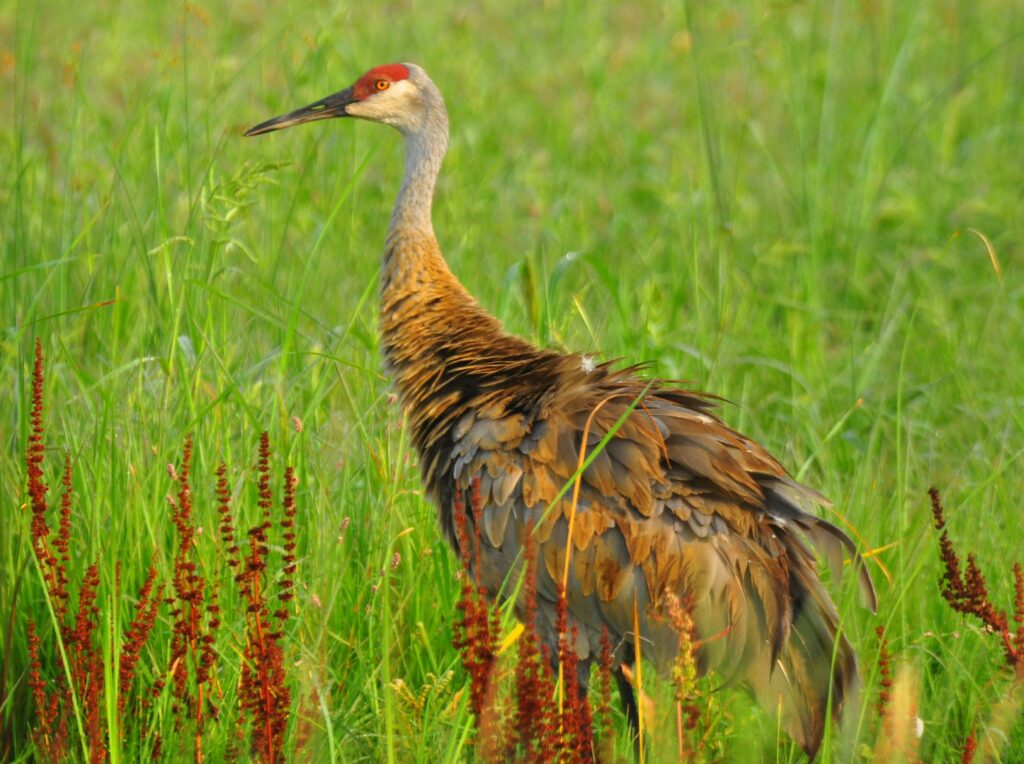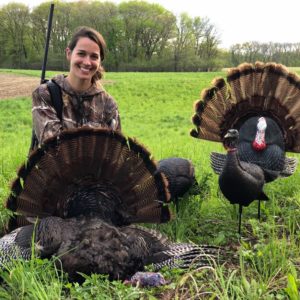Photography courtesy of Lowell Washburn, all rights reserved.
After a year of enduring things like weather, migration, and the rearing of youngsters, a bird’s feathers began to show their age. The annual replacement of those worn feathers is called the molt. For birds like male cardinals, the molt merely consists of trading an old red feather for a new red feather. For others, the transition is more dramatic. Birds like drake wood ducks or drake mallards, look much like hens during summer. But by late October, the drakes will have exchanged those drab colors for the flamboyant plumage we all love.

I’ve spent most of the past week photographing sandhill cranes. Cranes also have two distinct color phases – battleship gray during winter: rusty brown during summer. But unlike other birds, the crane’s color change has nothing to do with the molt. Cranes are naturally gray the year round. For nesting sandhills this could present a serious problem. Against the dull background of early spring, a light gray crane would stand out like a sore thumb – not a good situation for nesting birds trying to avoid predators.

To solve this dilemma, cranes dye their feathers by preening iron rich mud into their naturally gray plumage. By the time they’re finished, only the top half of the neck – an area their bills can’t reach – retains its natural color. The completed product is a perfect match for the drab backdrops early spring. Amazing!


 Tom Cope
Tom Cope Sue Wilkinson
Sue Wilkinson Susan Judkins Josten
Susan Judkins Josten Rudi Roeslein
Rudi Roeslein Elyssa McFarland
Elyssa McFarland Mark Langgin
Mark Langgin Adam Janke
Adam Janke Joe Henry
Joe Henry Kristin Ashenbrenner
Kristin Ashenbrenner Joe Wilkinson
Joe Wilkinson Dr. Tammy Mildenstein
Dr. Tammy Mildenstein Sean McMahon
Sean McMahon